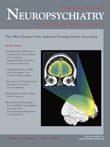Is the Chaotic Nature of Parkinson’s Disease Prone to Simulation?
To the Editor: Walking is regulated through a complex motor control system which produces a complex stride interval time series that is characterized by fractal and multi-fractal properties. On the other hand, studies on Parkinson’s disease show that although the chaotic nature of stride interval time is maintained, its chaotic properties change and approach more or less to a stochastic state. 1 , 2 Some studies, as our own previous study, ignore this chaotic behavior and focus on the stochastic properties of the disease state. 3 The disadvantage of such models is that they do not pay attention to global features of the disease and any minute change in the biological system would not be tracked by the model.
Since the last decade, the development of nonlinear dynamics and chaos theories has created new approaches to the understanding of complex biological systems, especially the nervous system. Several theories have been developed in different topics of neurobiology and psychiatry. Different research represents the main properties of nonlinear systems in different parts of the nervous system: dependency sensitive to initial conditions, self-organization, and similarity at different scales. 4
However, one problem remains unsolved: how such complex systems can be modeled based on experimental data? Physiological systems are so complicated that it is impossible to use the exact and detailed relations of system compartments to implement the complete model. Moreover, in chaotic states, we cannot construct our model exactly on the basis of recorded data, because each time we record the data, different quantities are achieved. It is worth noting that any minute error or noise in experimental conditions leads to a great change in chaotic system results, because chaotic systems are very sensitive to initial and environmental conditions. Hence, some global features of data are needed to simulate the biological behavior. We believe that simulations in chaotic systems must not be based on the error between recorded data and simulation results.
We propose to use some global features of chaotic systems like Lyapunov exponent, attractor properties, and Poincare map in order to present a proper model. A fitness function may be defined based on the difference of these three features between recorded and simulated data. Then, a chaotic artificial neural network can be designed, and weights which lead to better results (minimum of fitness function) must be chosen. We believe that a proper search method could be “genetic algorithm.”
If the chaotic neural network is trained properly, the model will simulate the chaotic biological system in an excellent manner; then, several benefits will be obtained. In Parkinson’s disease, the symptoms like gait disorders are seen when nearly 80% of substantia nigra neurons are destroyed; before this amount of destruction, no sign or symptom is seen. Therefore, models will not be able to simulate this range. For example our previous modeling on Parkinson’s disease was able to evaluate the behavior of the disease only after initiation of symptoms like tremor. 5 Since this novel modeling method will simulate a range from normal gait to severe Parkinson’s disease, and it will consider the global features of chaotic system, it seems to be more successful in this regard. Modeling the gap between healthy and initiation of disease state could be important in diagnosis, prediction, and treatment of Parkinson’s disease. This is the main difference between this novel model and previously presented ones.
Based on above-mentioned abilities, this novel modeling approach will be able to classify different states of the disease, even those from which we did not have a proper recording.
1 . Goldberger AL, Amaral LA, Hausdorff JM, et al: Fractal dynamics in physiology: alterations with disease and aging. Proc Natl Acad Sci U S A 2002; 99(suppl 1):2466–2472Google Scholar
2 . Hausdorff JM, Mitchell SL, Firtion R, et al: Altered fractal dynamics of gait: reduced stride-interval correlations with aging and Huntington’s disease. J Appl Physiol 1997; 82:262–269Google Scholar
3 . Sarbaz Y, Banae M, Gharibzadeh SA: Computational model for the Huntington disease. Med Hypotheses 2007; 68:1154–1158Google Scholar
4 . Toro MG, Ruiz JS, Talavera JA, et al: Chaos theories and therapeutic commonalities among depression, Parkinson’s disease, and cardiac arrhythmias. Compr Psychiatry 1999; 40:238–244Google Scholar
5 . Haeri M, Sarbaz Y, Gharibzadeh S: Modeling the Parkinson’s tremor and its treatments. J Theor Biol 2005; 236:311–322Google Scholar



